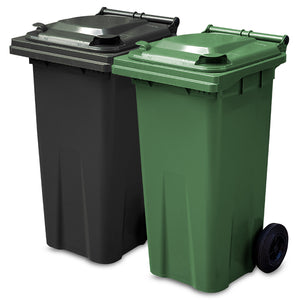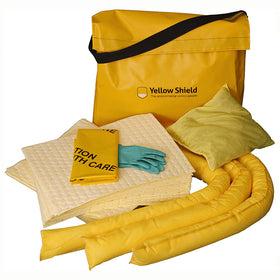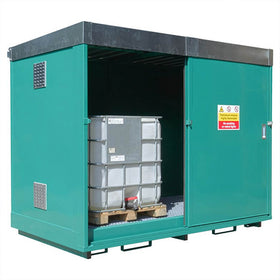The Advantages of Using Drum and IBC Spill Pallets
Throughout the UK, warehouses and factories have to store large amounts of flammable or hazardous liquids for a variety of applications. To ensure that they are up to code and meet the current Environment Agency and Health and Safety Executive guidelines, contingencies are required in the event of a spill from any liquid storage vessel.
By far the most common types of liquid storage vessels used in factories and warehouses are the standard 205 litre drums and IBC units. The most effective way to contain leaks or spills from these containers is to use either a bunded drum spill pallet or a bunded IBC spill pallet.
Drum Spill Pallets
Drum Spill Pallets are designed for indoor and outdoor storage of drums and smaller containers. They are a seamless, single moulded piece manufactured from robust and durable polyethylene. Drums can be located on top of the spill pallet so if the vessel should leak any liquid it will be captured in the sump of the spill pallet. The liquid that is caught in the sump can be easily cleaned up by removing the non-slip plastic grate that covers the bund, and disposing of it in the appropriate manner. So as well as providing a convenient method of storing and transporting drums, the drum spill pallet also serves as a secondary containment unit.
There are 6 standard sizes of drum spill pallets available as well as frames and covers to prevent rainwater contamination for when they are stored outside, or hardcover spill pallets with roller shutter doors for enhanced security.
IBC’s (1000 Litre Intermediate Bulk Containers) need to be stored properly in order to create a safe working environment by limiting any potential leaks or spillages. IBC spill pallets, like drum spill pallets are manufactured from polyethylene as one fully moulded piece. The IBC should be located on the pallet and is supported by strengthened integral columns. Again, any leaks or spills from the IBC will be contained in the sump below avoiding any potential spillages on the ground.
IBC spill pallets are also available with bucket dispensing areas that allow workers to access the liquid stored in the IBC without the risk of spillage or leaks. They are available in either single IBC or double IBC formats and can be supplied with or without removable grids.
Oil Storage Regulations
The Oil Storage Regulations 2001 state that any spill pallet must be able to contain at least 110% of the volume of the container that it is used for storing. For instance, for a 1,000 litre IBC, the IBC spill pallet has a total sump capacity of 1100 litres. If you are storing more than one container then the sump must be able to hold at least 110% of the largest container, or 25% of their aggregate capacity, or whichever is greatest.
By using either a drum spill pallet or an IBC spill pallet you will be guaranteeing not only lawful compliance but also the safety of your workforce and the surrounding environment.
www.yellowshield.co.uk



